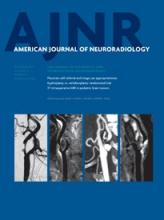Abstract
BACKGROUND AND PURPOSE: Functional MR imaging is widely used for research in functional brain development in healthy children. However, obtaining high-quality brain imaging data from pediatric research participants requires cooperation that is challenging for young children. In this study, we examined success rates for fMRI in typically developing children in both longitudinal and cross-sectional research study designs to inform the recruitment needs of future pediatric brain imaging studies.
MATERIALS AND METHODS: In the cross-sectional study, 459 healthy children (5–18 years of age, 215 girls) were recruited. A subset of 30 healthy children 5–7 years of age from the cross-sectional cohort were selected and scanned for 10 consecutive years in the longitudinal arm of the study. Following anatomic scans, each participant attempted 4 functional MR imaging tasks. Success rate was defined as the proportion of fMRI tasks completed. Differences in success rates across sexes and in cross-sectional-versus-longitudinal cohorts were evaluated by using the Fischer exact test.
RESULTS: In the cross-sectional study, 74% of the children completed all tasks. Success rates for individual tasks ranged from 34% to 67% for children 5–7 years of age and 76%–100% for those 8–18 years of age. In the longitudinal study, 89% of children completed all tasks in all 10 years. We established significance (P < .0001) between the cross-sectional and longitudinal cohorts for both 0% and 100% task completion rates. There was no significance between sexes.
CONCLUSIONS: When designing pediatric fMRI studies in children, the sample sizes indicated by power analysis should be scaled up according to age (ie, 33% for ages 8–18 years, 50% for ages 5–7 years).
ABBREVIATIONS:
- HUSH
- hemodynamic unrelated to scanner hardware
- SR
- success rate
- © 2014 by American Journal of Neuroradiology
Indicates open access to non-subscribers at www.ajnr.org












